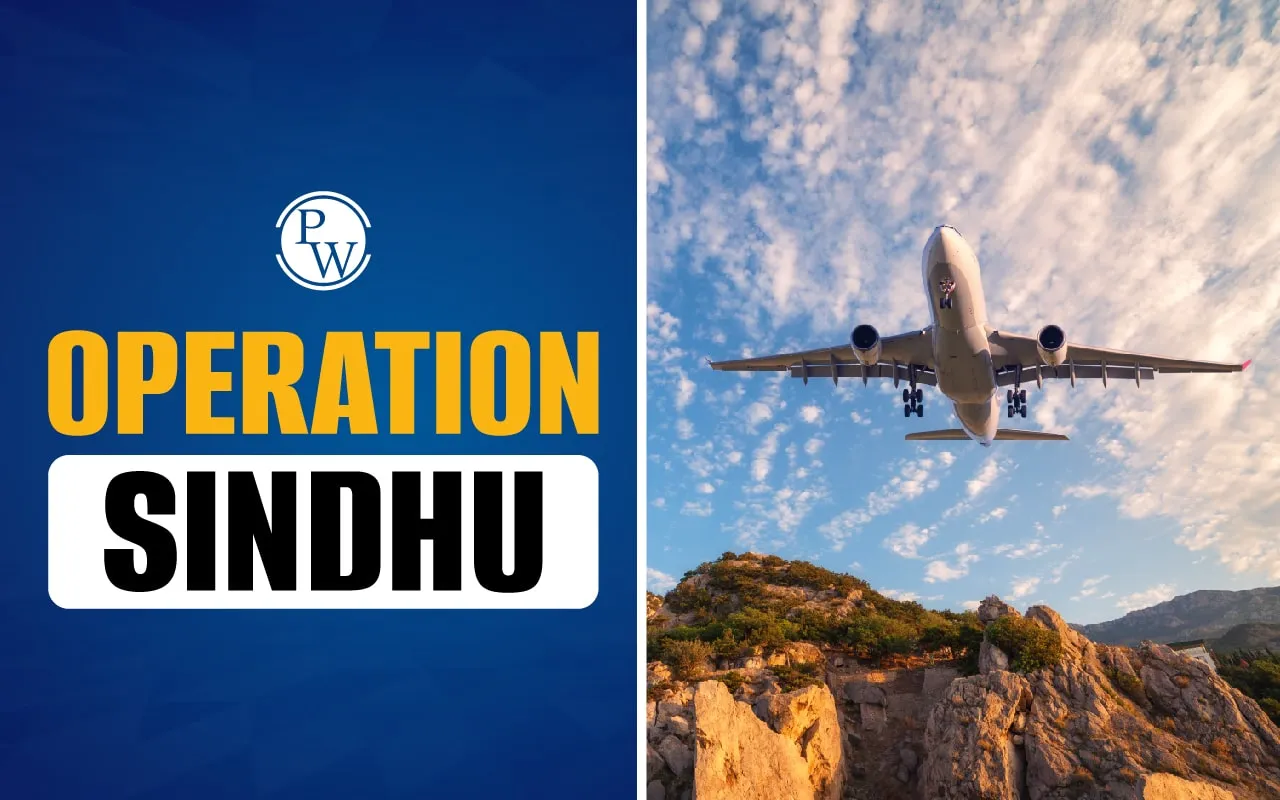

Operation Sindhu, an evacuation-focused mission, has been launched by the Government of India through the Ministry of External Affairs (MEA) to bring back Indian citizens from conflict zones in Iran amid the ongoing Israel-Iran war. Under Operation Sindhu, 110 Indian students have been rescued from northern Iran, and over 350 evacuation requests have been received.
What is Operation Sindhu?
Operation Sindhu is an evacuation mission launched by the Government of India on June 18, 2025. It aims to bring Indian citizens back safely from Iran amid rising instability following Israeli airstrikes on Iranian targets on June 13. The escalating tensions between the two countries have raised serious safety concerns for foreign nationals.
With a large number of Indian nationals, including students and professionals, residing in Iran, the Indian government initiated Operation Sindhu to ensure their safe return. The operation is being coordinated by the Ministry of External Affairs (MEA), with support from the Indian embassies in Iran and Armenia.
Operation Sindhu Objectives
Operation Sindhu’s primary objectives are:
-
Safely evacuate Indian nationals, especially students, from conflict zones in Iran amid the Iran-Israel tensions, including relocating them to safer areas within Iran before evacuation.
-
Coordinate evacuation through diplomatic channels and logistics, including overland movement to neighboring countries like Armenia and airlifts to India via secure routes.
-
Provide continuous support through emergency helplines, 24×7 MEA control rooms, and the Indian Embassy in Tehran to keep Indian nationals informed and connected.
-
Collaborate with the governments of Iran and neighboring countries to ensure smooth and secure passage for evacuees.
Operation Sindhu Key Features
Operation Sindhu's key features are:
-
Scale and Scope: Around 4,000 Indians live in Iran, including over 2,000 students; the operation aims to evacuate as many as possible.
-
Initial Evacuation: The first 110 students, mostly from Urmia University (including 90 from Jammu and Kashmir), were escorted by road to Armenia and flown to New Delhi on June 19.
-
Safe Transit Routes: Evacuation involves overland travel to neighboring countries like Armenia and Turkmenistan, followed by airlifts using secure airspace, avoiding conflict zones.
-
Government Coordination: Managed by the Ministry of External Affairs, Indian Embassy in Tehran, and Indian Air Force, with diplomatic support from Iran and Armenia.
-
Helpline and Support: A 24×7 MEA control room and embassy helplines provide continuous assistance to Indians in Iran.
-
Focus on Safety: Priority on relocating nationals from conflict areas to safer locations before evacuation.
-
Humanitarian Nature: A non-combatant mission focused solely on rescue and repatriation.
-
Public Communication: The government keeps the public updated through briefings, with evacuees sharing urgent accounts of the crisis.
Operation Sindhu Emergency Helpline
Indian citizens in Iran are encouraged to contact for help via the Operation Sindhu emergency helpline, which is:
| Category | Contact Details |
| Embassy of India in Tehran | |
| For Calls Only | +98 9128109115, +98 9128109109 |
| For WhatsApp | +98 901044557, +98 9015993320, +91 8086871709 |
| Bandar Abbas | +98 9177699036 |
| Zahedan | +98 9396356649 |
| cons.tehran@mea.gov.in | |
| 24×7 Control Room – Ministry of External Affairs, New Delhi | |
| Toll-Free | 800118797 |
| Phone Numbers | +91-11-23012113, +91-11-23014104, +91-11-23017905 |
| +91-9968291988 | |
| situationroom@mea.gov.in | |
Major Evacuation Missions by India
This is not the first time India has undertaken a large-scale evacuation mission to bring its citizens home from conflict zones or disaster-affected areas. Here is the list of major evacuation missions like Operation Sindhu conducted by India over the years:
-
Kuwait Airlift (1990): Following the Iraqi invasion of Kuwait, India organized the largest civilian airlift in history, bringing home around 170,000 Indians between August and October 1990 with about 500 Air India flights.
-
Operation Sukoon (2006): During the Israel-Lebanon conflict, India evacuated roughly 1,764 nationals, along with others, by naval vessels over ten days.
-
Operation Safe Homecoming (2011): Amid the Libyan Civil War, more than 15,000 Indians were rescued via a coordinated air-sea mission.
-
Operation Raahat (2015): Indian forces evacuated about 4,640 nationals and nearly 1,000 foreign citizens from Yemen during the ongoing conflict and airstrikes.
-
Operation Maitri (2015): After the devastating Nepal earthquake, India launched a rescue and relief mission that included evacuating over 11,000 people.
-
Operation Sankat Mochan (2016): India evacuated approximately 150 citizens from conflict zones in South Sudan.
-
Operation Devi Shakti (2021): Following the Taliban takeover in Afghanistan, around 450 Indians and foreign nationals were evacuated.
-
Operation Ganga (2022): During the Russia-Ukraine war, India safely brought back nearly 18,000 citizens, mainly students, with cooperation from neighboring countries.
-
Operation Kaveri (2023): Close to 4,000 Indians were evacuated from the conflict-affected Sudan by air and sea.
-
Operation Ajay (2023): India began evacuating nationals from Israel amid the Israel-Palestine conflict.
In essence, Operation Sindhu is the latest in a long line of India’s proactive and humanitarian evacuation efforts to protect its citizens abroad. These operations collectively highlight India’s growing capacity and preparedness to respond swiftly to international emergencies.
Want to learn about International Relations for the UPSC exam? Explore UPSC courses by Physics Wallah!
Operation Sindhu FAQs
Who launched Operation Sindhu?
Why was Operation Sindhu launched?
When was Operation Sindhu launched?
Is Operation Sindhu a military mission?
How can Indian citizens contact for evacuation under Operation Sindhu?

UPSC Coaching












